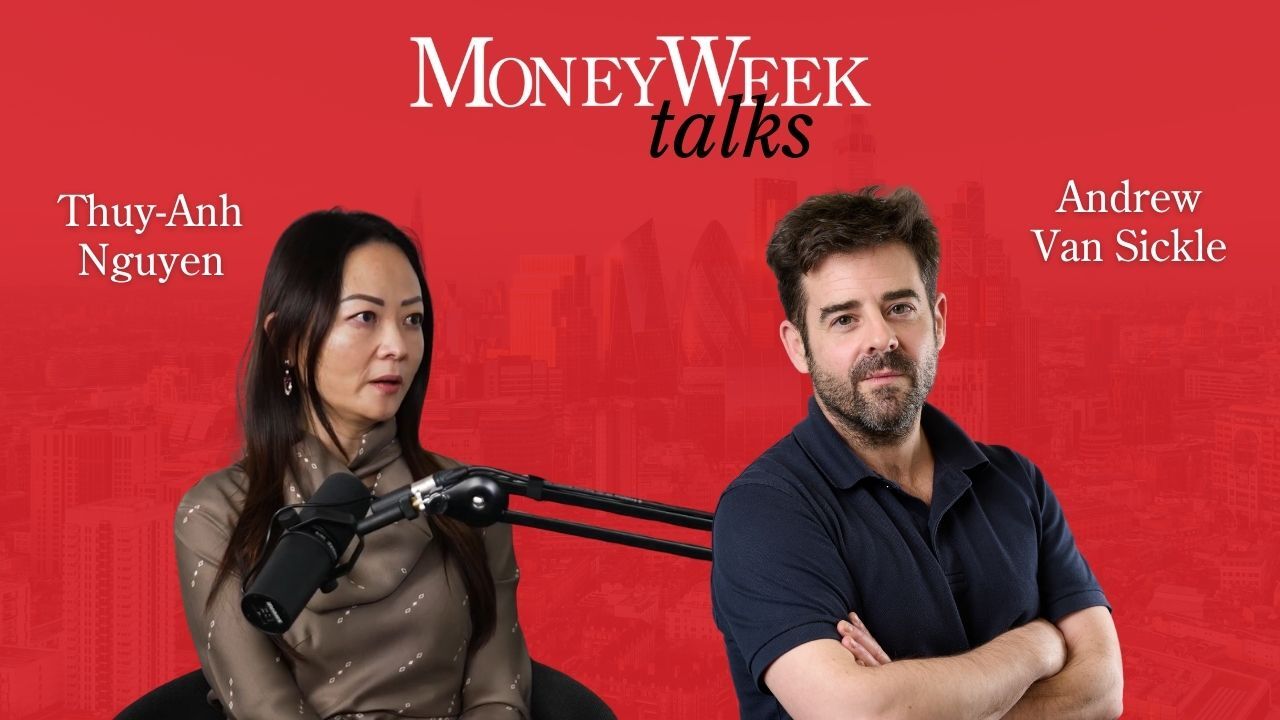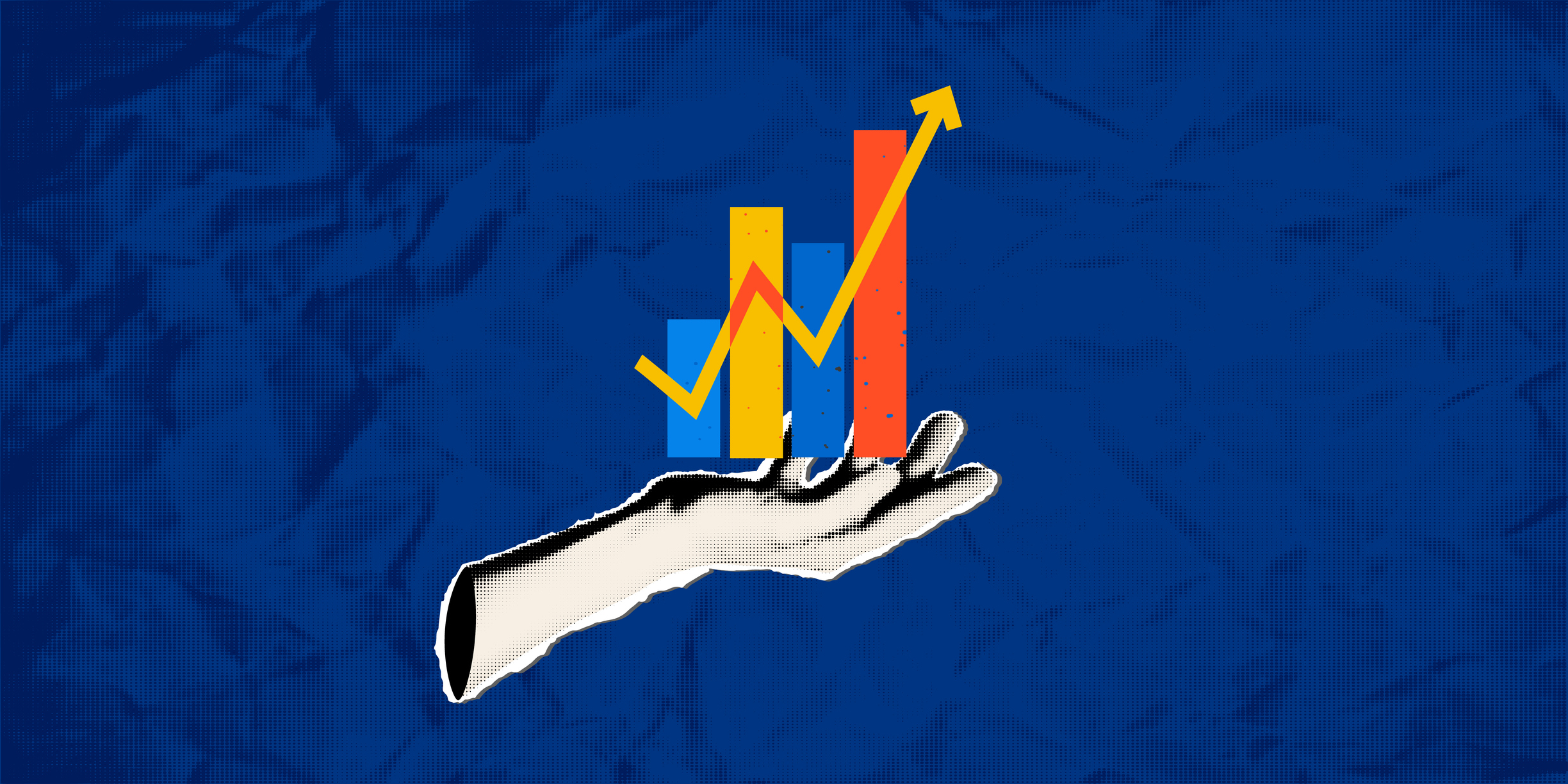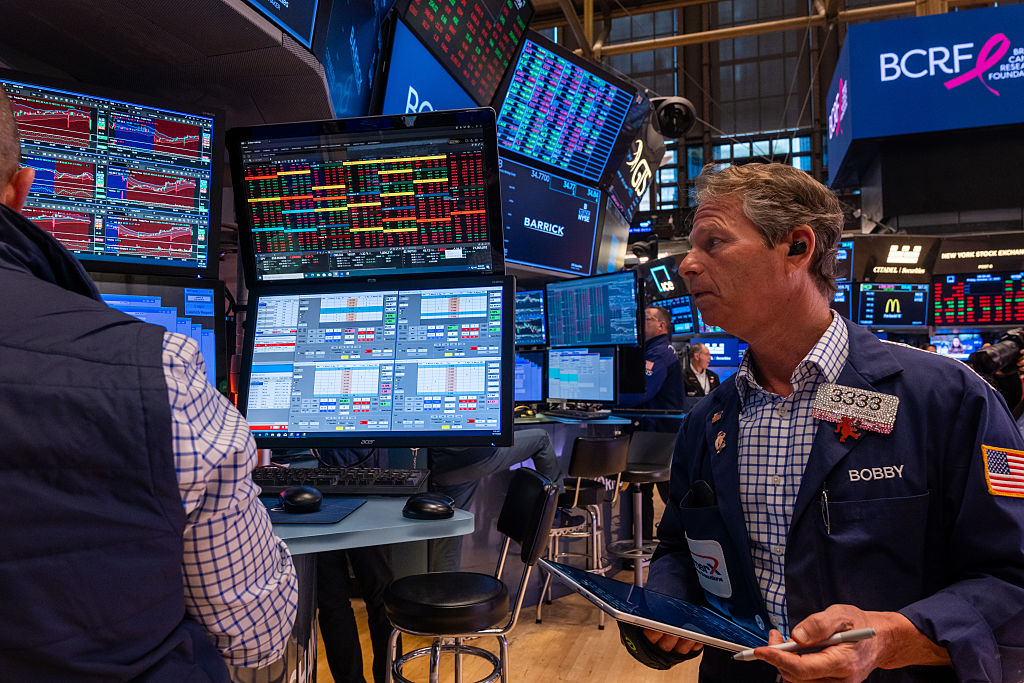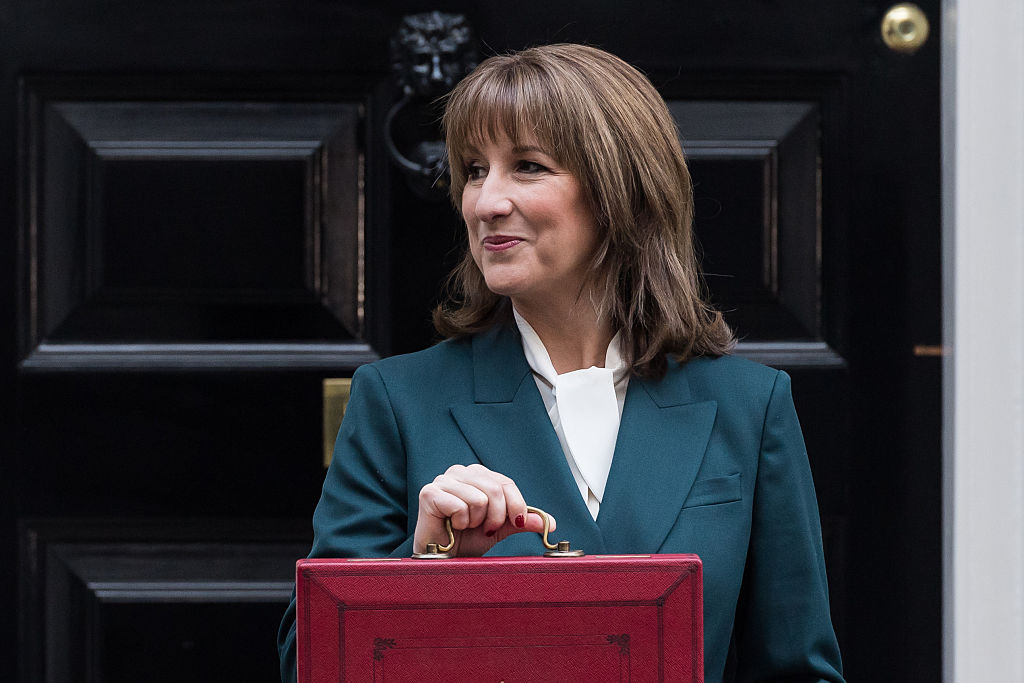Investors need to get ready for an age of uncertainty and upheaval
Tectonic geopolitical and economic shifts are underway. Investors need to consider a full range of tools when positioning portfolios to accommodate these seismic changes


After World War II, America and its allies put in place a set of alliances, institutions and power structures to rebuild war-ravaged countries, create geopolitical stability and generate global economic growth. This post-war order has endured – with one important change – for much of the following eight decades.
The fall of the Berlin Wall and the dissolution of the Soviet Union seemingly marked the end of any alternative to Western capitalism and liberal democracy as the main global economic system. However, in recent years, it has become increasingly obvious that the ties holding this US-dominated system together are fraying and are likely to break.
We are heading into a new world that is likely to be more unstable. In a symbol of this change, on 5 September this year, US president Donald Trump signed an executive order renaming the Department of Defence as the Department of War. This restores the name that it carried from 1789 until 1947 and points to the rising risks of conflict in the years ahead.
MoneyWeek
Subscribe to MoneyWeek today and get your first six magazine issues absolutely FREE

Sign up to Money Morning
Don't miss the latest investment and personal finances news, market analysis, plus money-saving tips with our free twice-daily newsletter
Don't miss the latest investment and personal finances news, market analysis, plus money-saving tips with our free twice-daily newsletter
So how should investors position themselves for what comes next? What areas that are currently under-represented in most portfolios should they consider for diversification and protection?
Rivalry and conflict between the US and China
The main question is how the shift from a single superpower to two contending nations – the US and China – will affect global supply, demand and the efficiencies of comparative advantage. Free trade has generated huge gains since the end of the Second World War, and even more so since the end of the Cold War. This is now clearly under threat.
With the end of the post-war order comes the new “Great Game”. This name was originally given to the struggle between Britain and Russia for influence in Central Asia (Afghanistan and Persia). This time, the strategic rivalry and political conflict is between the US and China. Paradoxically, it is America that is now pursuing a more inward-looking strategy under Trump’s Make America Great Again (MAGA) banner, while China aims to build economic and political alliances through its Belt and Road (BRI) and Global Development Initiative (GDI) projects.
While America strives to bring its manufacturing base back onshore, Europe is now having to divert budgets from social welfare to rearmament. Both are now in stiff competition with China to electrify the planet and build digital infrastructures. This will inevitably lead to global competition for resources across energy, metals and critical minerals.
This is leading the two superpowers to weaponise their core strategic advantages. For America, this is the US dollar, still the world’s global reserve currency. For China, it is a stranglehold on rare earth elements and critical minerals.
China needs an alternative to the dollar
Freezing and confiscation of assets and denial of access to global payments systems is forcing non-US aligned countries to look for an alternative store of wealth and means of exchange. Herein lies the potential significance of the Brics+, the informal name for the original group of five key emerging-market powers – Brazil, Russia, India, China, South Africa – plus other countries that have begun joining them for summits and policy coordination. Some see this group as a counterpart to the G7 group of developed economies. Initiatives by the Brics+ members so far include work on a development bank, central-bank cooperation and an international payment messaging system.
Any alternative to the dollar looks increasingly likely to be a form of tokenised, asset-backed digital currency. This explains why many central banks closely aligned with the Brics+ nations have been large buyers of gold and other precious metals.
If the creation of a new currency system seems far-fetched, it is worth a quick review of the genesis of the post-war order: the Bretton Woods Agreement of 1944. China is a great student of history, and this agreement provides an template for how new world orders are created. While World War II was still raging, more than 700 delegates from 44 countries met at Bretton Woods in New Hampshire in the US to work on a new global monetary system. The goal was to create a globally efficient foreign exchange market, prevent competitive currency devaluations and promote global economic growth.
John Maynard Keynes, one of the principal economists at the meeting, proposed creating a new international reserve currency called the “bancor” and setting up a global central bank called the “Clearing Union”. However, these proposals were eventually watered down by the US Treasury in favour of a more prominent role for the US dollar, whereby the dollar would be pegged to the price of gold, and other participating currencies would be pegged to the dollar. The agreement was fully implemented in 1958, pegging the US dollar to gold at $35 per ounce.
This system functioned until the early 1970s when it became evident that US gold reserves were not adequate to sustain the peg. This caused a run on gold, forcing first a temporary suspension of the dollar’s convertibility into gold followed by complete collapse of the agreement in 1973. US president Richard Nixon also imposed a 10% tariff on all dutiable imports to force its major trading partners to adjust their currencies upwards and trade barriers downwards. Does this sound familiar?
China has already taken the strategic initiative to convene the Brics+ group of nations. It has established the Shanghai Gold Exchange – and associated physical storage – and now holds a significant percentage of its reserves in gold. It has shown little desire to replace the dollar with its own currency – internalisation of the renminbi would erode the ability to operate capital controls – but it and its allies need an alternative to the dollar.
Given China’s embrace of technology and advanced domestic digital-currency adoption, it does not feel far-fetched to envisage it launching a Bretton Woods-style gold-backed digital currency for those unable or unwilling to access the US dollar system. Crypto tokenisation is the vehicle, not the asset.
China's control of strategic resources
China’s strongest bargaining chip lies in its control of rare-earth elements (which are used in magnets, electrification, lasers and optical devices, catalysts and emission controls and radar/guidance systems), as well as critical minerals, that have broader energy, industrial and defence applications.
China has this control because, while the West focused on the comparative advantage of outsourcing its production to countries with lowest costs, China focused on building an end-to-end supply chain comprised of exploration, mining, refining and industrial manufacturing. With its looser environmental controls, it has come to dominate the global supply of these critical minerals.
In the tit-for-tat game of tariffs and sanctions, China is able to leverage its position in the one area where the US is completely vulnerable. So just as China and its allies have no alternative but to develop a competitor to the US dollar as a store of wealth and means of exchange, the US and Europe now see they have no choice but to develop alternative sources for mining and processing capacity to break this reliance. Exacerbating the situation, America’s prioritisation of its own MAGA agenda over historical alliances has left Europe and other previously US-aligned countries to build their own rather than collective resources.
If investors believe the post-war order is irretrievably compromised, they should consider investments that give exposure to these themes. Gold and precious metals for hard assets. Tokenisation and chips to enable digitalisation. Energy and power generation, rare earth elements and critical minerals, which will be in demand as both sides try to secure supply chains. And US and European defence stocks as the West joins in the new arms race.
Investors have many ways to access these ideas, including individual stocks, thematic exchange-traded funds (ETFs) or exchange-traded commodities (ETCs) that hold physical metals. Listed commodity futures and options are also becoming increasingly accessible, as major exchanges such as the Chicago Mercantile Exchange (CME) roll out mini and even micro contracts, which are 1/10 or 1/100 of the size of standard contracts and require less up-front capital. Such instruments are only suitable for experienced investors, but they offer a way to quickly add hedges or speculative positions to a portfolio – something that will become more valuable in a fast-changing world.
James Proudlock is managing director of OptionsDesk.
This article was first published in MoneyWeek's magazine. Enjoy exclusive early access to news, opinion and analysis from our team of financial experts with a MoneyWeek subscription.
Get the latest financial news, insights and expert analysis from our award-winning MoneyWeek team, to help you understand what really matters when it comes to your finances.
James has over 30 years of experience at CEO, MD and Board level with a focus on establishing, building and managing businesses for major international firms including the London Metal Exchange, JPMorgan, UBS, ED&F Man Group and John Swire & Sons. He has lived and worked in Hong Kong, Singapore and New Zealand, and has a degree in Chinese and Economics from London University’s School of Oriental and African Studies.
-
 Asia's new tiger economy: MoneyWeek Talks
Asia's new tiger economy: MoneyWeek TalksPodcast MoneyWeek's editor, Andrew van Sickle, speaks to Dragon Capital's Thuy-Anh Nguyen about Vietnam's remarkable rise
-
 How much do you need to earn to afford the average rent?
How much do you need to earn to afford the average rent?Rental growth is slowing and making rents more affordable for tenants, but what hwo much do you need to earn to afford the average UK rent?
-
 Leading European companies offer long-term growth prospects
Leading European companies offer long-term growth prospectsOpinion Alexander Darwall, lead portfolio manager, European Opportunities Trust, picks three European companies where he'd put his money
-
 How to harness the power of dividends
How to harness the power of dividendsDividends went out of style in the pandemic. It’s great to see them back, says Rupert Hargreaves
-
 Why Trustpilot is a stock to watch for exposure to the e-commerce market
Why Trustpilot is a stock to watch for exposure to the e-commerce marketTrustpilot has built a defensible position in one of the most critical areas of the internet: the infrastructure of trust, says Jamie Ward
-
 Tetragon Financial: An exotic investment trust producing stellar returns
Tetragon Financial: An exotic investment trust producing stellar returnsTetragon Financial has performed very well, but it won't appeal to most investors – there are clear reasons for the huge discount, says Rupert Hargreaves
-
 How to capitalise on the pessimism around Britain's stock market
How to capitalise on the pessimism around Britain's stock marketOpinion There was little in the Budget to prop up Britain's stock market, but opportunities are hiding in plain sight. Investors should take advantage while they can
-
 London claims victory in the Brexit wars
London claims victory in the Brexit warsOpinion JPMorgan Chase's decision to build a new headquarters in London is a huge vote of confidence and a sign that the City will remain Europe's key financial hub
-
 The consequences of the Autumn Budget – and what it means for the UK economy
The consequences of the Autumn Budget – and what it means for the UK economyOpinion A directionless and floundering government has ducked the hard choices at the Autumn Budget, says Simon Wilson
-
 Reinventing the high street – how to invest in the retailers driving the change
Reinventing the high street – how to invest in the retailers driving the changeThe high street brands that can make shopping and leisure an enjoyable experience will thrive, says Maryam Cockar
